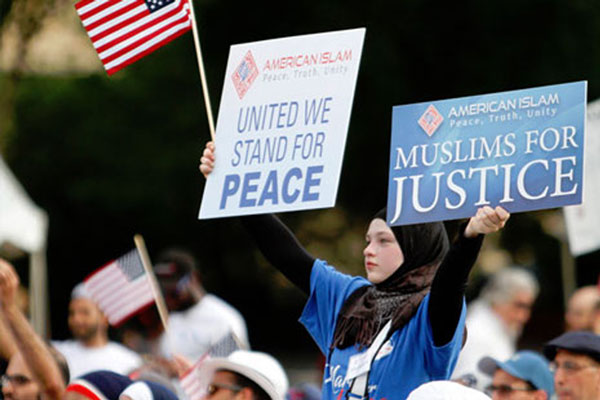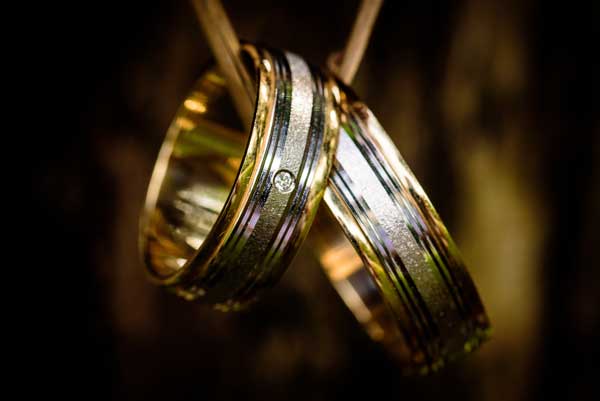Sustained European contact with Muslims goes back at least to the late 7th and early 8th centuries when in 711 CE, Tarik ibn Ziyad, the Berber-appointed governor of Morocco, led a Muslim army across the Straits of Gibraltar (Jabal al Tarik) and defeated the Visigoth forces in Spain, liberating the persecuted Jewish and Christian populations under their rule. Muslims then ruled southern Spain, Al Andalus, for approximately 800 years, establishing a period of enlightenment often referred to as the Golden Age of Islam. A reign of terror against Muslims and Jews started in 1492 after King Ferdinand II of Aragon and Queen Isabella I of Castille, the Catholic monarchs of Spain, conquered Granada, the last Muslim stronghold in Al-Andalus. Jews were forcibly expelled from Spain and many North African Muslim countries accepted these religious refugees. Jews and Muslims remaining in Spain were forced to accept Christianity or be killed. Muslims were ultimately expelled from Spain in 1608.
The Ottoman Empire conquered the Balkans consisting of Bulgaria, Greece, Hungary, and Macedonia, during a process that started in 1362 and continued for approximately the next 100 years. The four North African countries of Morocco, Algiers, Tunis, and Tripoli were also a part of the Ottoman empire and constituted what was known as the Barbary States. Under the unofficial protection of the heads of respective territories, the Barbary States would enrich their coffers through pirating commercial ships from other countries, often kidnapping foreign sailors and passengers for ransom. These seafaring marauders were infamously referred to as the Barbary Pirates. The maritime trade and travel of European nations were severely hampered by the threat of being robbed of their goods and their crew being ransomed or sold into slavery in North Africa or other parts of the Ottoman Empire. This slave trade resulted in many hundreds of thousands of Europeans being enslaved in North Africa. This phenomenon was a motivating factor in the late 15th century for Spanish monarchs Ferdinand and Isabella to finance the voyages of Christopher Columbus to identify other sources of wealth and to find new, more secure, trade routes to the lucrative markets of India and the Far East so as to avoid the threat of pirates. In 1492, Columbus set foot in the Americas.
Thirteen Colonies and Its Immigrants
The first British colony was established in the “New World” in 1607. By the late 1700s, thirteen colonies had been established. They declared their independence from Britain in 1776 and fought the British in the American Revolutionary War. The American colonies won the war and a treaty was signed in 1783. The first head of state to recognize the newly-established government of the United States was Muhammad III, the Sultan of Muslim Morocco. Muhammad III signed the Moroccan-American Treaty of Friendship in 1777, recognizing the sovereignty of the United States and affording safe passage and open ports to American ships. Yet, the first overseas war fought by the young nation was fought from 1801 to 1805 against Muslims in the country of Tripoli. Tripoli had demanded that the U.S. pay a tribute for any ship sailing with the American flag. Thomas Jefferson, before being elected president in 1800, adamantly stated that he would refuse to pay a tribute to Tripoli. His position changed when the U.S.S. Philadelphia, carrying a number of then-current and former U.S. diplomats and valuable cargo was captured and $60,000 demanded as ransom for the seized vessel. Jefferson relented and the government paid the ransom for the release of its citizens.
Today, Muslims in the United States continue to navigate a complicated relationship with the people and government of this country. Some of the earliest Muslims to arrive here were Africans who were sold into slavery and transported to early America. This is different from the Europeans who came here as immigrants fleeing grinding poverty or religious and political persecution, or the tens of thousands of British prisoners, for example, who were sent here as a way for England to get rid of their undesirable citizens. These convicts were sold as indentured servants in the colonies, with a specific number of years they were required to work before being granted their freedom. In contrast, those from the African continent were trapped in a mostly inescapable system of brutal generations-long chattel slavery. Although recent research has established that 30 percent or more of enslaved Africans in the United States were Muslims, the exact number is presently unquantifiable and may never be known.
Demographics of Muslim American Citizens
In Edward Curtis’ searing political analysis in his book “Muslim American Politics and the Future of US Democracy,” the author states, “From that time until the present, war-making in Muslim lands has been frequently interpreted by US policymakers and citizens alike as a struggle for liberty and freedom over and against what are said, in blatantly racist terms, to be Islam’s and Muslims’ tendencies towards despotism, ignorance, and fanaticism… US liberalism’s supposedly benevolent military intervention abroad, including in places where Muslims live, is essential to explaining why Muslim Americans are not offered full political and social citizenship in the United States.”
From the inception of the United States to the present time, the population of Muslim Americans has been comprised of a significant number of immigrants and refugees, as is the case in other Western countries. Accurate census data about the number of Muslims in the United States is challenging to obtain, primarily because questions about religious preference are not included in the decennial (every ten years) U.S. census. Muslim American population estimates range from 3.45 million according to the latest Pew Research findings to 6-8 million, estimates from research institutions and other Muslim-sponsored surveys. The likelihood is that the more accurate figure lies somewhere in between.
According to a 2017 Pew Research Study, U.S. Muslims concerned About Their Place in Society, But Continue to Believe in the American Dream, “Nearly six-in-ten U.S. Muslims are first-generation Americans, having been born in another country. Three-quarters of the U.S. Muslims are immigrants or the children of immigrants…the vast majority of Muslims living in the U.S. (82%) are American citizens, including 42% who were born in the U.S. and 40% who were born abroad but who have been naturalized.” African American Muslims are routinely estimated to make up 20-25 percent of the U.S. Muslim population.
Fulfilling Citizenship Requirements
The diverse racial, ethnic, geographical, and socio-economic profiles of U.S. Muslims preclude the simplistic stereotyping that, intentionally or not, serves to marginalize or typecast all members of this particular group. The third president, Thomas Jefferson, famously argued for the future citizenship and full participation in the electoral process of even “despised groups like Muslims,” a group whose existence in the U.S. at the time he failed to acknowledge or was unaware of. Former president Eisenhower, who cut the ribbon in 1957 to inaugurate what was then the largest mosque in the Western hemisphere — the Islamic Center in Washington, D.C. — like Obama, George W. Bush, and others in between, have, according to Curtis, “articulated the idea that Muslims, like other religious minorities, can become genuine Americans, especially if they serve in the US military and fight its ideological enemies.” From the Revolutionary War to the longest war in U.S. history in Afghanistan, Muslim Americans have fulfilled their citizenship requirements and more. American Muslims are arguably the most assimilated Muslims in all of the Western countries. Resistance to Muslim assimilation into American society is, to a large extent, the function of religious and racially-based prejudice on the part of the larger society rather than any legitimate reasons, any perceived deficiency or estrangement from American society on the part of the Muslim American community. A similar false notion was set forward after the end of chattel slavery in the U.S. when some asserted that Black culture was the cause for anti-Black racism and the failure of the newly emancipated population to be accepted in mainstream society. The similar phenomenon taking place today is that some people in the larger American community refuse to accept Muslims as equal citizens and insist on seeing Islam and Muslims as alien and a destructive force. Despite the fact that the majority of Muslims in the U.S. support and embrace the good that American society has to offer, a well-financed Islamophobic network flourishes in the U.S.
The geographical diversity of Muslim Americans, hailing from numerous other countries, is unparalleled in any other nation’s population. Consequently, the mere fact that Muslim Americans may have family members in nations that the U.S. and its allies are at war with has provided justification for them to become targets of extrajudicial surveillance, arrest, and rendition. Additionally, when violent illegal acts are committed on American soil by Muslim foreign nationals, Muslims as an entire group come under suspicion. Acts of institutionalized discrimination and false labeling of Muslim Americans have erected additional barriers for Muslims to overcome in our longstanding efforts to become citizen partners in this land.
The Opportunity to Serve
However, the Muslim American community has, for the most part, rejected attempts by some within our ranks to self-identify as hapless victims rendered marginalized and hopeless because of Islamophobia. Within the last 13 years, the United States has seen the election of its first Muslim member of Congress, Keith Ellison, subsequently three other Muslims, Andre Carson, Ilhan Omer, and Rashida Tlaib, and a host of Muslim city council members, county commissioners, school board members, and other elected officials across the nation. While electing Muslims to public office should not be the ultimate achievement goal for Muslim Americans, it is a barometer of the capacity of the Muslim community to overcome Islamophobic discrimination and organized resistance to Muslims achieving full citizen rights and privileges and having the opportunity to serve the greater American society. Muslim Americans have embraced the divinely mandated responsibility to serve humanity through the efforts of multi-area social service operations, social justice initiatives, dawah (Islamic propagation efforts), and the display of exemplary moral character and conduct. Muslim Americans are a significant and valuable thread in this country’s diverse and beautiful social and political fabric. We pray that those who oppose or even detest that reality will come to realize that we are here to stay and to serve the common good.






